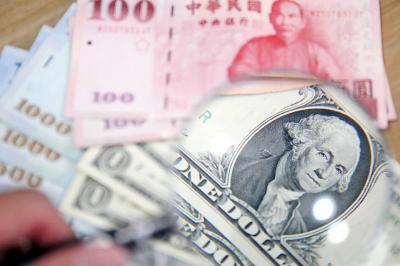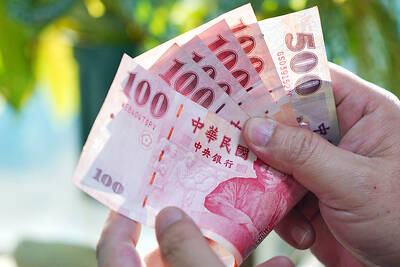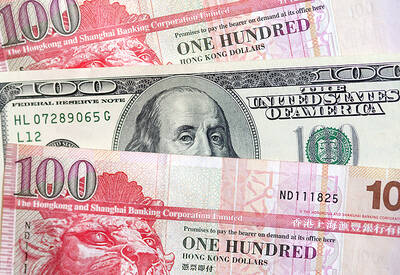Four offshore wind power developers yesterday failed to secure power purchase agreements with a favorable feed-in tariff of NT$5.8498 per kilowatt-hour for their six projects, as they did not receive approvals from the Changhua County Government and the Bureau of Energy.
Yesterday was the last day for developers to seize the lucrative rate, as any projects approved hereafter would be subject to a lower rate at NT$5.106 for the next 20 years.
The county government — which oversees the six offshore wind projects by Orsted A/S, Hai Long Offshore Wind (海龍), a joint venture by Northland Power Inc and Yushan Energy Co (玉山能源), Copenhagen Infrastructure Partners, and China Steel Corp (中鋼) — was largely seen as the final regulatory hurdle after expressing its reservations on Friday last week.
Permits for the wind projects cannot be issued without the local government’s consent, Bureau of Energy section head Chen Chung-hsien (陳崇憲) told the Taipei Times by telephone yesterday, adding that the bureau had forwarded updated project plans addressing the county’s reservations on the projects at about noon.
The county saw a transition of power when Changhua County Commissioner Wang Hui-mei (王惠美) of the Chinese Nationalist Party (KMT) defeated former commissioner Wei Ming-ku (魏明谷) of Democratic Progressive Party (DPP) in an election on Nov. 24 last year.
Under the DPP’s rule, the county government had in September given preliminary approval to the six projects, but now it holds different opinions following the transition, Chen said.
The county government was unable to approve the projects, as there was not enough time to review the complex and lengthy documents within one business day, Changhua Department of Economic Affairs Director Liu Yu-ping (劉玉平) was quoted as saying in local Chinese-language media reports.
The county government chose not to work overtime to review all the projects yesterday and would provide its opinion on the matter following a thorough review.
Without permits from the bureau and consent from the county, the four offshore wind energy developers missed the 5pm deadline to submit applications with state-run utilities to secure power purchase agreements at last year’s rate, Taiwan Power Co (台電) spokesman Hsu Tsao-hua (徐造華) said.
Although some of the foreign developers said that they would rethink their investment in the nation if they could not secure a favorable purchase price, they are likely to complete ongoing projects, as the new price has not been finalized, Chen said.
However, there was some good news for developers, with Bureau Director-General Lin Chuan-neng (林全能) saying that the central government is mulling to delay changes that would cap the government’s wind energy purchases at 3,600 operating hours annually and cancel the tiered feed-in tariff scheme, after developers said that their financing efforts would be severely affected.

The US dollar was trading at NT$29.7 at 10am today on the Taipei Foreign Exchange, as the New Taiwan dollar gained NT$1.364 from the previous close last week. The NT dollar continued to rise today, after surging 3.07 percent on Friday. After opening at NT$30.91, the NT dollar gained more than NT$1 in just 15 minutes, briefly passing the NT$30 mark. Before the US Department of the Treasury's semi-annual currency report came out, expectations that the NT dollar would keep rising were already building. The NT dollar on Friday closed at NT$31.064, up by NT$0.953 — a 3.07 percent single-day gain. Today,

‘SHORT TERM’: The local currency would likely remain strong in the near term, driven by anticipated US trade pressure, capital inflows and expectations of a US Fed rate cut The US dollar is expected to fall below NT$30 in the near term, as traders anticipate increased pressure from Washington for Taiwan to allow the New Taiwan dollar to appreciate, Cathay United Bank (國泰世華銀行) chief economist Lin Chi-chao (林啟超) said. Following a sharp drop in the greenback against the NT dollar on Friday, Lin told the Central News Agency that the local currency is likely to remain strong in the short term, driven in part by market psychology surrounding anticipated US policy pressure. On Friday, the US dollar fell NT$0.953, or 3.07 percent, closing at NT$31.064 — its lowest level since Jan.

Hong Kong authorities ramped up sales of the local dollar as the greenback’s slide threatened the foreign-exchange peg. The Hong Kong Monetary Authority (HKMA) sold a record HK$60.5 billion (US$7.8 billion) of the city’s currency, according to an alert sent on its Bloomberg page yesterday in Asia, after it tested the upper end of its trading band. That added to the HK$56.1 billion of sales versus the greenback since Friday. The rapid intervention signals efforts from the city’s authorities to limit the local currency’s moves within its HK$7.75 to HK$7.85 per US dollar trading band. Heavy sales of the local dollar by

The Financial Supervisory Commission (FSC) yesterday met with some of the nation’s largest insurance companies as a skyrocketing New Taiwan dollar piles pressure on their hundreds of billions of dollars in US bond investments. The commission has asked some life insurance firms, among the biggest Asian holders of US debt, to discuss how the rapidly strengthening NT dollar has impacted their operations, people familiar with the matter said. The meeting took place as the NT dollar jumped as much as 5 percent yesterday, its biggest intraday gain in more than three decades. The local currency surged as exporters rushed to